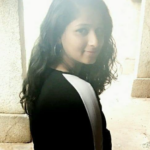English Passages for DP SI Exams
If you are preparing for the DP- SI exams, then this post will be very useful for you. Read all the passages and answer the questions.
Passage 1 (SI-2008)
Our theory and practice in the area of sentencing have undergone a gradual but dramatic metamorphosis through the years. Primitive man believed that a crime created an imbalance which could be rectified only by punishing the wrongdoer. Thus sentencing was initially vengeance-oriented. Gradually, emphasis began to be placed on the deterrent value of sentence upon future wrongdoing.
Though deterrence is still an important consideration, increased emphasis on the possibility of reforming the offender – of returning him to the community as a useful citizen – bars the harsh penalties once imposed and brings into play a new set of sentencing criteria. Today, each offender is viewed as a unique individual and the sentencing judge seeks to know why he has committed the crime and what are the chances of a repetition of the offense. The judge’s prime objective is not to punish but to treat.
This emphasis on treatment of the individual has created a host of new problems. In seeking to arrive at the best treatment for individual prisoners, judges must weigh an imposing array of factors. I believe that the primary aim of every sentence is the prevention of future crime. Little can be done to correct past damage and a sentence will achieve its objective to the extent that it upholds general respect .for the law, discourages those tempted to commit similar crimes, and leads to the rehabilitation of the offender, so that he will not run afoul of the law again. Where the offender is so hardened that rehabilitation is plainly impossible the sentence may be designed to segregate the offender from society so that he will be unable to do any future harm. The balancing of these interacting and often mutually antagonistic factors requires more than a good heart and a sense of fair play on me judge’s part although these are certainly prerequisites. It requires the judge to know as much as he can about the prisoner before him. He should know the probable effects of sentences upon these who might commit similar crimes and how the prisoner is likely to react to imprisonment or probation. Because evaluation of these various factors may differ from judge to judge the same offence will be treated differently by different judges.
The task of improving our sentencing techniques is so important to the nation’s moral health that it deserves far more careful attention that it now receives from the bar and the general public. Some of those at the bar and many civic minded individuals who usually lead even the judges in the fight for legal reform approach this subject with apathy or with erroneous preconceptions. For example, I have observed the sentiment shared by many that after a judge has sentenced several hundred defendants, the whole process I becomes one of callous routine. I have heard thus feeling expressed even by attorneys who should know better.
1. The author’s purpose in this passage is to
(a) inform readers about sentencing! practices in the past.
(b) convince judges about sentencing practices in the past.
(c) tell people not to commit crimes for which they might receive unfair sentences.
(d) persuade readers that it is important to improve sentencing techniques.
2. The word ‘metamorphosis’ in the Kits sentence means
(a) restoration
(b) interpretation
(c) change
(d) fault
3. Which of the following situations would be comparable to the ancient idea of sentencing?
a. a lion stalking and killing a dear,
b. a child slapping a playmate who has slapped him or her.
c. a traffic policeman putting a ticket on a wrongly parked car.
d. a person scolding his pet that has tried to run away.
4. With which of the following statements the author would NOT agree?
(a) a judge should treat each offender as a ah individual.
(b) a judge should refrain from imposing harsh penalties.
(c) a judge should try to correct past damages.
(d) a judge has to be a student of human nature.
5. According to the passage, what is NOT the objective of the sentencing in modern times?
(a) preventing future crime
(b) avenging the victim.
(c) rehabilitating the offender.
(d) discouraging others from comm crimes.
Answers: 1 – d, 2- c, 3- b, 4-c, 5-a
Passage (SI-2009)
Rubashov found that by no stretch of his imagination could he picture his neighbor’s state of mind, in spite of all his practice in the art of ‘thinking through others’ minds’. He could do it without much effort as far as Ivanov was concerned or No. 1, or even the officer with the monocle; but with Rip Van Winkle he failed. He looked at him sideways; the old man had just turned his head towards him; he was smiling; holding the blanket round his shoulders with both hands, he was walking beside him with his short steps, humming almost inaudibly the tune of ‘Arise, ye wretched of the earth’.
When they had been conducted back into the building. at his cell-door, the old man turned round once again and nodded to Rabashov; his eyes blinked with a suddenly changed expression, terrified and hopeless; Rubashov thought he was going to call out to him, but the warder had already slammed the door of 406. When Rubashov was shut into his cell, he went at once to the wall; but Rip Van Winkle was silent and gave no answer to his tapping.
No. 402, on the other hand, who had looked at them from his window, wanted to be told everything about the walk, down to the smallest detail. Rubashaov had to inform him how the air had smelled, whether it had been cold or just cool, whether he had met any other prisoners in the corridor, and whether he had, after all, been able to exchange a few words with Rip Van Winkle. Rubashov patiently answered every question; compared with No. 402, who was never allowed out, he felt a privileged person; he was sorry for him and had almost a feeling of guilt.
The next day and the day after, Rubashov was fetches for his walk at the same hour after breakfast. Rip Van Winkle was-always his companion in the roundabout. They’ circled slowly side by side. Each with a blanket over his shoulders, both in silence; Rubashov sunk in thought, from time to time glancing attentively through his pince-nez at the other prisoners or at the windows of the building; the old man, with the growing stubble of beard and his gentle, childlike smile, humming his eternal song.
Up t: their third walk together they had not exchanged a word, although Rubashov saw that the officials did not seriously try to enforce the rule of silence and that the other pairs in the circle talked incessantly; they did so looking stiffly’ ahead and speaking with the prison technique familiar to Rubakhov, hardly moving their lips. The third day, Rubashov had brought his notebook and pencil with him; the note-book stuck out of his left outside pocket. After ten minutes the old man noticed it; his eyes lit up. He glanced covertly at the warders in the centre of the circle, who were holding an animated conversation and did not seem interested in the prisoners; then he rapidly pulled pencil and note, book “‘out of Rubashav’s pocket and began to scribble something, under cover of his bell-like blanket. He finished it quickly, tore off the page, and pressed it into Rubashav’s hand; he retained, however, book and pencil and .went on scribbling. Rubashov made certain their guards were paying no attention to them, and looked at the page. Nothing was written on it, it was a drawing; a geographical sketch of the country they were in, drawn with astonishing accuracy. It showed the principal towns, mountains and rivers, and had a flag planted in the iddle, bearing the symbol of the Revolution
1. Rubashov left his note-book sticking out of his pocket because:
(a) He had forgotten it was there.
(b) He wanted to record his thoughts.
(c) He wanted to write a rote to Rip Van Winkle.
(d) He hoped Rip Van Winkle would write in it
2. ‘ ‘Pince-nez’ are spectacles which:
(a) have two kinds of lens.
(b) are kept in place with thick and tight ear pieces.
(c) have thick lenses.
(d) are kept in place supported only at the none.
3. The prisoners looked stiffly ahead because:
(a) the guards would not allow them to turn.
(b) they were bound tightly.
(c) they wished to hide that they were talking.
(d) they did not trust each other.
4. Rubashov left ‘a privileged person’ because:
(a) he was an important prisoner.
(b) he could pass on information.
(c) he was allowed out.
(d) he was patient.
5. The phrase “he glanced covertly’ here means:
(a) He looked with envy.
(b) He looked through his fingers.
(c) He looked boldly.
(d) He looked secretly.
Answers: 1 – d, 2- d, 3- c, 4-c, 5-d
Passage (SI-2010)
Recently technological advancement in manned and un-manned undersea vehicles, overcome some of the limitations of divers equipment. Without a vehicle, divers often became sluggish and their mental concentration was limited. Because of undersea pressure that affected their mind, concentration among divers was difficult or impossible. But today, most oceanographers make observations by means of instruments that are lowered into the ocean or from samples taken from the water. Direct observations of the ocean floor is made not only by the divers, but also by deep-diving submarines. Some of these submarines can dive to depths of more than several miles and cruise at depths of 15 thousand feet. Radio equipped buoys can be operated by remote control in order to transmit information back to land-based-laboratories including data about water temperature, currents and weather. Some of mankind’s most serious problems, especially those concerning energy and food may be solved with-the help of observations made possible by the undersea vehicles.
1. Divers have had problems in concentrating underwater because:
(a) the pressure affected their minds.
(b) the vehicles they used have not been perfected.
(c) they did not think clearly.
(d) the pressure destroyed their mental processes.
2. Undersea vehicles:
(a) are too small for a man to fit inside.
(b) are very slow to respond.
(c) have the same limitations that divers have.
(d) make direct observations of the ocean floor
3. This passage suggest that tire successful exploration of the ocean upends upon:
(a) vehicles as well as divers.
(b) Radio that divers use to communicate.
(c) controlling currents and the weather.
(d) removal of the limitations of diving equipment.
4. According to the author, what are some of the problems the underwater studies may eventually resolve?
(a) Weather and temperature control.
(b) Food and energy shortages.
(c) Transportation •and communication problems.
(d) Overcrowding and housing problems.
5. How is a radio-equipped buoy most likely to be operated?
(a) By operators inside the vehicle and underwater.
(b) By operators .outside the vehicle on a ship.
(c) By operators outside the vehicle on a diving platform.
(d) By operators outside the vehicle in a laboratory on the shore.
6. With what topic is the passage primarily concerned?
(a) Recent technological advances.
(b) Communication among drivers.
(c) Direct observation of the ocean floor.
(d) Undersea vehicles
Answers: 1 – a, 2- d, 3- a, 4-b, 5-d, 6-a
Visit Current-Affairs.org for latest current affairs, previous year question papers, free online quiz for SSC and others, Study material and lot more.
Click Here to Register For Private Jobs in India Alert directly in Your Inbox.




